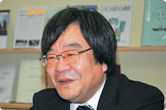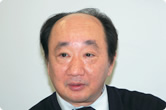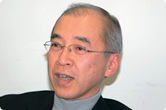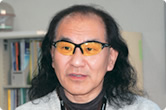 Note: Titles and other information are current as of the time of the interviews.
Note: Titles and other information are current as of the time of the interviews.

Professor, the Osaka City University Advanced Research Institute for Natural Science and Technology (OCARINA)
Dr. Kamiya, in collaboration with Dr. Jian-Ren Shen of Okayama University, began X-ray crystallographic analysis of a protein complex in plants called Photosystem II (PSII), which functions as the main catalyst for releasing oxygen during plants’ photosynthesis, around 1990. In 2011, they successfully obtained a clear, fully detailed image of the crystal structure of PSII, which had remained the last mystery of photosynthesis. This discovery was selected as one of nine runners-up for Breakthrough of the Year by Science magazine that year.

Professor, Advanced Institute for Materials Research (WPI-AIMR), Institute of Multidisciplinary Research for Advanced Materials (IMRAM), Tohoku University
A leading scholar of biomimetics in Japan, Dr. Shimomura chairs the Research Group on Biomimetics at the Society of Polymer Science, Japan. The group serves as a local committee for ISO’s biomimetics technical committee. He is also working on developing a biodiversity database, as he advocates the need for a new interdisciplinary field of science research based on comprehensive knowledge of natural history.

Special Fellow, Tamagawa University
Dr. Kondo discovered the unique operating principles of a chipmunks’ heart during hibernation, after electrophysiological and pharmacological study of its mechanisms that endure low temperatures, which he began as he explored low-temperature preservation of the human heart. While he continues his efforts to unravel physiological mechanisms that regulate mammals’ hibernation, he is investigating possible methods of artificially inducing hibernation.

Department of Interdisciplinary Space Science, Institute of Space and Astronautical Science, Japan Aerospace Exploration Agency (JAXA)
The Institute of Space and Astronautical Science at JAXA contributes to space exploration by promoting space science research through close relationships between universities and other research institutes. Dr. Ishioka, a specialist in space life science, investigates how the unique conditions of outer space, such as cosmic radiation and microgravity, affect animals, based on experiments aboard Kibo, the Japanese Experiment Module on the International Space Station.
